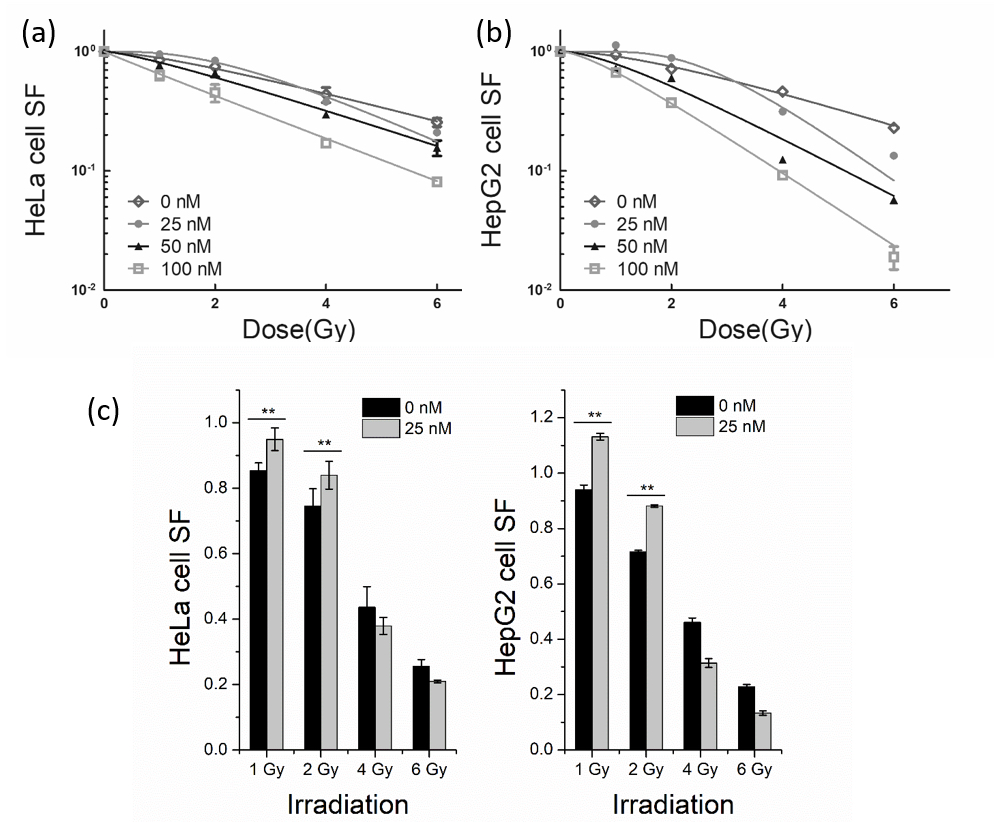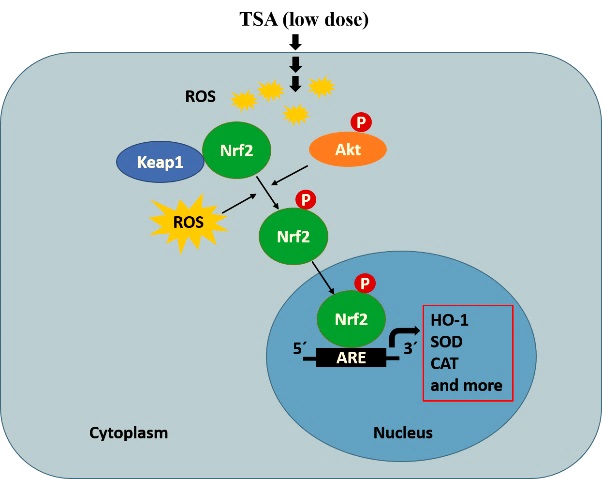
Histone acetylation is an important epigenetic modification. Histone deacetylase inhibitor (HDACi) can increase acetylation level and inhibit the proliferation and metastasis of cancer cells. Besides, ionizing radiation can take advantage of it to kill cancer cells. Thus investigation of the effects of epigenetic modifications on radiation sensitivity has been attracting much attention in the field of radiation biology.
Recently, Prof. HUANG Qing’group from Hefei Institutes of Physical Science (HFIPS) studied the effect of histone acetylation on cell radiosensitivity.
They found that low dose of trichostatin A (TSA) could improve the radiation resistance rather than the radiosensitivity as Akt/Nrf2-dependent antioxidation pathway in cancer cells was activated.
In this research, researchers applied TSA, one representative of HDACis, to treat cancer cells and analyzed its effect on the radiation sensitivity. They found that low-dose TSA (25 nM) pretreatment before receiving low-dose γ-ray irradiation could help HeLa and HepG2 cells to resist against the radiation damage. Furthermore, they confirmed that low-dose TSA could activate the Akt/Nrf2 pathway and upregulated expression of HO-1,SOD and CAT to stimulate the cellular defense mechanism.
This is quite different from previous phenomenon observed and reported by the same group.
Before they applied larger dose of TSA, and they found that pretreatment with 200 nM TSA after 24 h could significantly increase the radiosensitivity of cells, while at the earlier pretreatment time (e.g., 6 h), TSA could reduce the radiosensitivity.
These results showed the complexity of epigenetic modification on radiation sensitivity, which is dependent on both TSA dose and pretreatment hours.
This research was mainly supported by the National Natural Science Foundation of China (grants No. 11635013, 11775272 and 11704343).
Link to the paper: Low Dose of Trichostatin A Improves Radiation Resistance by Activating Akt/Nrf2-Dependent Antioxidation Pathway in Cancer Cells

The surviving fraction of HeLa and HepG2 cells gamma-ray irradiated without or with TSA pretreatment in concentrations of 0, 25, 50 or 100 nM for 24 h, respectively (Image by ZHANG Fengqiu)

The effect of low-dose TSA on radio-sensitivity (Image by ZHANG Fengqiu)
Contact:
ZHAO Weiwei
Hefei Institutes of Physical Science (http://english.hf.cas.cn/)
Email: annyzhao@ipp.ac.cn